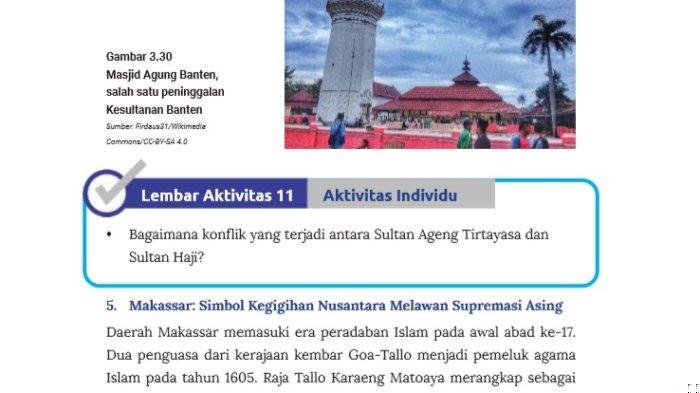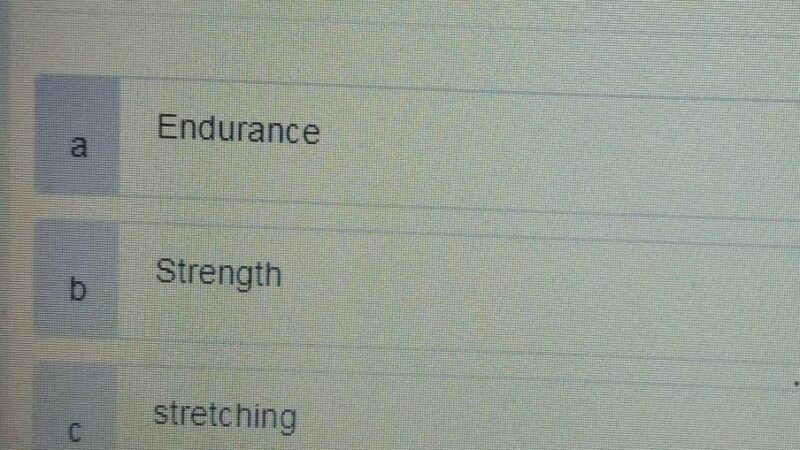Hal Yang Perlu Dilakukan Sebelum Menyusun Alur Tujuan Pembelajaran Adalah Strategi Efektif Untuk Sukses

Before you dive into structuring learning objectives, take a moment to clarify your goals. Hal yang perlu dilakukan sebelum menyusun alur tujuan pembelajaran adalah memahami kebutuhan peserta didik dan konteks pembelajaran. This foundational step ensures that your framework aligns with what students truly need.
Engage with your audience by asking questions about their interests and aspirations. Understanding these dynamics allows you to create effective and motivating objectives. In doing so, you not only set the stage for a successful learning experience but also foster a positive environment for growth.
Hal yang Perlu Dilakukan Sebelum Menyusun Alur Tujuan Pembelajaran adalah
When preparing an effective learning pathway, it is crucial to lay a solid foundation beforehand. This process ensures that the goals align with the needs of the learners and the overall educational objectives. Here are the essential steps that need to be taken before structuring the learning objectives.
Understand Your Learners
Before you outline learning objectives, start with a deep understanding of your learners. Knowing who they are, what they already know, and their learning preferences can drastically influence how you design the curriculum.
Gather Demographic Information
Demographic information provides insights into the learners’ backgrounds, age, and even their cultural context. You can gather this information through:
- Surveys and questionnaires
- Interviews with students or parents
- Focus group discussions
Assess Learning Styles
Different learners absorb information in various ways. Some may prefer visual aids, while others might benefit from hands-on activities. To capitalize on these preferences, consider:
- Conducting learning style assessments
- Observing students during activities to note preferences
- Incorporating varied teaching methods
Identify Learning Needs and Gaps
Before setting goals, identify what your learners need to achieve and where they currently stand. Learning needs may include:
Analyze Existing Knowledge
Assess their current level of understanding in the subject. This step can involve:
- Pre-assessments to gauge prior knowledge
- Reviewing past performance or grades
- Feedback from previous courses
Determine Skill Gaps
Identify any skills or knowledge gaps that learners exhibit. This helps in tailoring objectives that ensure students acquire what they lack.
- Use formative assessments regularly
- Gather feedback from fellow educators
Define Overall Educational Goals
After understanding your learners and their needs, the next step is to articulate broader educational goals. This gives direction to your learning objectives.
Consider Curriculum Standards
Align your goals with relevant educational standards. This includes:
- State or national educational standards
- Subject-specific standards (like STEM or language arts)
Set Long-term and Short-term Goals
Differentiate between long-term and short-term goals. Long-term goals might encompass overall competencies students will achieve by the end of a course or grade level, while short-term goals break down these competencies into manageable chunks.
Collaborate with Stakeholders
Collaboration with other educators, administrators, and even parents can provide fresh perspectives and insights into your educational goals.
Engage Other Educators
Discussing your plans with colleagues can highlight potential challenges and best practices. You might also involve:
- Curriculum specialists
- Mentors or coaches
Incorporate Student Feedback
Getting input from students can help refine your objectives. Hold discussions or surveys to gather their thoughts on what they find engaging or challenging.
Establish Learning Outcomes
Once you have your goals set, it’s time to define what success looks like for your learners. Learning outcomes clarify what learners should know or be able to do after instruction.
Create SMART Outcomes
Ensure your learning outcomes are Specific, Measurable, Achievable, Relevant, and Time-bound (SMART). For instance:
- Specific: “Students will be able to solve quadratic equations” instead of “Students will learn math.”
- Measurable: “Students will score 80% or higher on the post-test” instead of “Students will understand.”
- Achievable: Set realistic expectations based on assessments and support.
- Relevant: Align outcomes with career skills or life applications.
- Time-bound: Specify a timeframe, such as “by the end of this unit.”
Choose Appropriate Assessment Methods
To evaluate whether the learners meet the set objectives, decide on effective assessment methods. Assessments should accurately measure student learning and progress.
Formative Assessment Techniques
Incorporate ongoing assessments that provide immediate feedback and help inform future instruction. Examples can include:
- Quizzes and exit tickets
- Peer evaluations
- Group discussions
Summative Assessment Strategies
Summative assessments assess the overall learning at the end of an instructional unit. Common strategies include:
- Final exams
- Projects or portfolios
- Performance tasks
Design Instructional Strategies
With the objectives and assessments defined, focus on designing the instructional strategies that will guide learners through the process.
Incorporate Active Learning
Active learning engages students in the process, making them more likely to retain information. Consider methods such as:
- Collaborative group work
- Hands-on activities and experiments
- Role-playing and simulations
Utilize Technology
Incorporating technology can enhance learning experiences and cater to different learning styles. Use tools such as:
- Interactive presentations (like Google Slides)
- Online quizzes (Kahoot, Quizizz)
- Learning management systems (Moodle, Google Classroom)
Evaluate and Revise the Process
After implementing your learning objectives and strategies, it’s essential to evaluate their effectiveness and make necessary adjustments.
Collect Feedback
Gather feedback from students regarding what worked and what didn’t. This can be done through:
- Post-assessments
- Reflection journals
- Surveys
Analyze Assessment Data
Review assessment data to evaluate if learners meet the objectives. Use the data to identify areas that may need revision or a different approach.
Documentation and Reflection
Document your processes, decisions, and outcomes for future reference. Reflection on your practices can lead to continuous improvement.
Create a Teaching Journal
Maintain a journal that includes insights from your experiences, student interactions, and reflections on what strategies were effective.
Share with the Educational Community
Consider sharing your findings and objectives with colleagues and professional networks. This not only contributes to your growth but can help others in their educational practices.
In summary, laying the groundwork before formulating learning objectives involves understanding your learners, identifying their needs, defining explicit goals, collaborating with stakeholders, and continuously evaluating and refining the process. By following these steps, educators can ensure a more structured and effective learning experience that fosters student success.
CARA MENYUSUN ALUR TUJUAN PEMBELAJARAN ATP PADA KURIKULUM MERDEKA
Frequently Asked Questions
What initial considerations should educators keep in mind before designing learning objectives?
Before designing learning objectives, educators should consider the needs and backgrounds of their students. Understanding the diverse learning styles, prior knowledge, and interests of students can help tailor objectives that are relevant and engaging. Additionally, reviewing curriculum standards and required competencies ensures that the objectives align with educational expectations and goals.
How can educators align learning objectives with assessment methods?
Educators can align learning objectives with assessment methods by clearly defining what students should know and be able to do upon completion of a lesson or unit. By specifying measurable outcomes, teachers can then select assessment tools that directly evaluate whether students have achieved those outcomes. This alignment ensures coherence between teaching, learning, and evaluation processes.
What role does identifying resources play in preparing to outline learning objectives?
Identifying resources plays a crucial role in preparing to outline learning objectives. Educators should evaluate available materials, technology, and support systems that can enhance the learning experience. By understanding what resources are at their disposal, teachers can create realistic and attainable objectives that leverage these tools to facilitate student learning.
Why is it important to consider the context and environment before creating learning objectives?
Considering the context and environment before creating learning objectives is vital because these factors shape how students engage with the material. Factors such as classroom dynamics, cultural backgrounds, and available facilities influence students’ learning experiences. By taking these elements into account, educators can formulate objectives that are relevant and contextually appropriate, fostering a more effective learning atmosphere.
How can feedback from previous lessons inform the development of new learning objectives?
Feedback from previous lessons can provide valuable insights into what worked well and what didn’t. Educators can analyze student performance data, gather student input, and reflect on their own teaching practices to identify areas for improvement. This reflective process allows teachers to construct new learning objectives that address previous shortcomings and build on successful strategies.
Final Thoughts
Hal yang perlu dilakukan sebelum menyusun alur tujuan pembelajaran adalah menetapkan tujuan yang jelas dan spesifik. Ini membantu guru dan siswa memahami apa yang diharapkan dari proses belajar. Selain itu, penting untuk mempertimbangkan kebutuhan dan karakteristik siswa agar pembelajaran lebih relevan dan efektif.
Jangan lupa untuk menyusun langkah-langkah yang logis dan terstruktur. Dengan alur yang baik, siswa dapat mengikuti proses pembelajaran dengan mudah. Memastikan adanya penilaian yang tepat juga menjadi bagian penting dalam menyusun alur tujuan pembelajaran agar setiap siswa dapat mengevaluasi kemajuan mereka.







